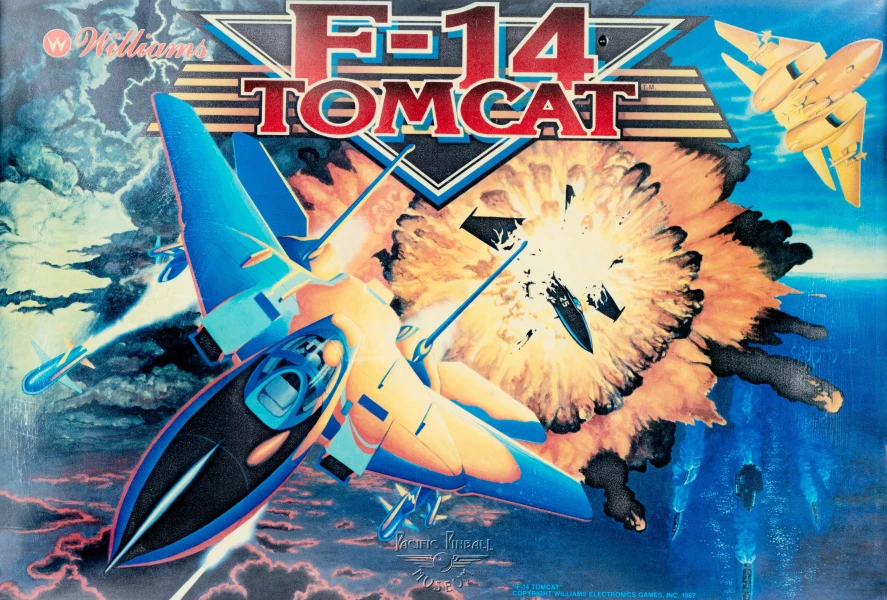F-14 Tomcat
F-14 Tomcat Preview Image

Machine Details
Manufacturer
n/a
Year
n/a
Technology Era
n/a
Machine Description
Content Under Review
Help us improve this content
Your support accelerates our content verification efforts.
Support Our WorkF-14 Tomcat, released by Williams Electronics in 1987, represents a significant entry in the golden age of solid-state pinball machines. The game capitalized on the massive popularity of military aviation themes in the 1980s, particularly following the success of the 1986 film 'Top Gun'. This timing made it especially relevant to arcade-goers of the era.
Designed by Steve Ritchie with art by Python Anghelo, F-14 Tomcat featured innovative gameplay mechanics including a unique 'danger zone' multiball sequence and special targeting systems that simulated aerial combat. The playfield incorporated dual upper flipper mechanisms and a distinctive center ramp that mimicked aircraft carrier deck operations. The machine's sound package, created by Brian Schmidt, included authentic jet engine sounds and military radio chatter that enhanced the immersive experience.
The game distinguished itself with a sophisticated ruleset that rewarded skilled play while remaining accessible to newcomers. Players could progress through various mission objectives, including target practice, enemy engagement, and carrier landings. The backglass artwork, featuring a dramatic rendering of the iconic F-14 fighter jet, became one of the most recognized designs of its era.
Production numbers for F-14 Tomcat reached approximately 4,500 units, making it a moderate success for Williams. Today, the machine is highly sought after by collectors, particularly military aviation enthusiasts and fans of Steve Ritchie's design work. Its enduring popularity has helped maintain its value in the secondary market, and it continues to be celebrated as one of the definitive military-themed pinball machines of the 1980s.